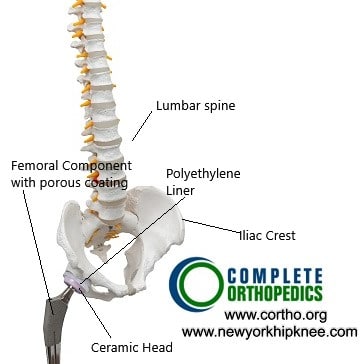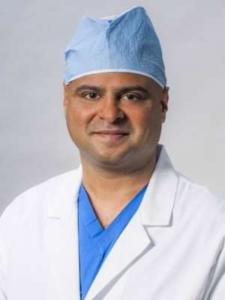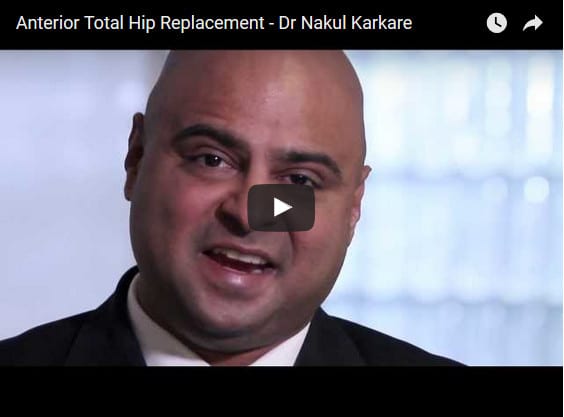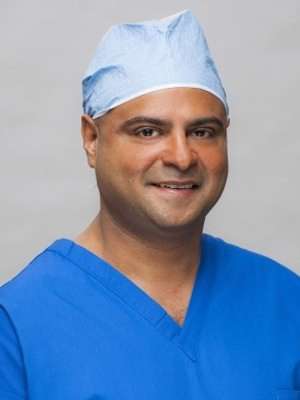Dr. Karkare – Hip Replacement Specialist
Dr. Karkare is a third-generation Orthopedic Surgeon following the footsteps of his father and grandfather before him. From a young age, Dr. Karkare watched in awe as his father and grandfather used their talents to improve the lives of their patients. Now, Dr. Karkare improves lives as one of New York’s leading hip and knee surgeons.
Dr. Karkare has performed more than 1,500 high-quality hip replacement surgeries, and his work has been published in over thirty peer-reviewed journals and medical articles. He is an expert in solving hip and knee issues and helping his patients return to full, active, and pain-free lives.
Every patient is unique and that is why Dr. Karkare’s goal is to provide the best individual care for each person. Before any procedures, a thorough consultation and examination are performed to address each patient’s needs and concerns. Dr. Karkare’s dedication to excellent patient care enhances his abilities as a surgeon.
As one of the top orthopedic specialists in New York City, Dr. Karkare has expert knowledge and skill in hip replacement surgery including the recent advancement of the anterior method and in robotic procedures.
By choosing advanced surgical techniques such as the anterior method, his patients experience less pain and an overall better recovery. Dr. Karkare’s number one priority is to provide exceptional care to every patient enabling them to make an informed, educated decision to feel confident in their care every step of the way.
What to Expect from Hip-Replacement Surgery
Before you make the decision about hip-replacement surgery, it is important to understand how the procedure can and cannot help. Replacing the hip joint with an implant, otherwise known as total hip replacement surgery, is a very common procedure to relieve pain and improve mobility.
Traditionally, this procedure is performed through one long incision to view and access the hip joint. After a total hip replacement surgery, recovery begins immediately–patients can expect to be walking (with assistance) the same day as the procedure. Most patients experience pain relief and improved mobility in only a few short weeks.
Most patients can return to normal daily activity quickly, but you should avoid taking on too much too soon in order to allow your body to heal. As you continue to improve your mobility through physical therapy, you will find that you have much less pain than before your surgery.
It is important to note that if you are a candidate who is overweight or participates in high-impact activities, these lifestyles may accelerate the wear of the new implant and cause it to be painful and loose.

Total Hip Replacement
A total hip replacement consists of a prosthetic ball and prosthetic parts covering the socket. Together these parts re-duplicate the function of a normal hip joint.
Minimally Invasive total hip replacement surgery
Minimally invasive total hip replacement surgery allows the surgeon to perform the procedure through a smaller incision than traditional methods, providing less damage to the surrounding tissue and muscle.
Minimally invasive total hip replacement surgery typically takes longer but allows for faster healing times and shorter hospital stays post-procedure. Unlike the traditional method, the minimally invasive method is not suitable for all patients. Ideal candidates for this procedure are younger, of average weight (not obese or very muscular), and lack bone deformity.
Before receiving minimally invasive total hip replacement surgery, patients will undergo a thorough consultation and examination to discuss individual risks and benefits. Rest assured that Dr. Karkare will assist you in choosing the best option for you and your family.
Hip Replacements Can Now Last a Lifetime
I was interviewed CBS2’s Max Gomez for a recent segment about Hip Replacements, and how younger people are getting them more and more because they’ve become so long lasting. It’s not your fathers hip replacement anymore!
Locations
A patient undergoing a minimally invasive total hip replacement surgery will receive the same type of artificial implant that is used in a traditional total hip replacement surgery.
For minimally invasive surgery, Dr. Karkare uses instruments specifically designed to disturb less soft tissue surrounding the hip. Muscles and tendons near the hip must be split or detached in both minimally invasive and traditional surgery methods–however, minimally invasive methods allow for less splitting and detachment than traditional methods.
While the length of the incision depends on the size of the patient and difficulty of the procedure, minimally invasive methods allow some patients to experience an incision as small as 1.5 – 2 inches on the outside of the hip, as compared to a 5 – 10 inch incision via traditional total hip replacement surgery methods.
A smaller incision, paired with less soft tissue damage, encourages healing and helps prevent dislocation of the hip after surgery.
Total Hip Replacement Case Studies
Total Hip Replacement FAQ’s
- What is a total hip replacement?
- How long is the hospital stay?
- How long will it take to recover?
find out the answers to these and other questions here
Why choose Dr. Karkare?
As a top joint replacement specialist in New York City, Dr. Karkare has extensive experience in anterior hip replacements, ensuring patients have the broadest array of safe and effective treatment options to relieve hip pain and other symptoms.

This enables every patient to make an informed, educated decision so they can feel confident in their care every step of the way.
How Can I Help You?



